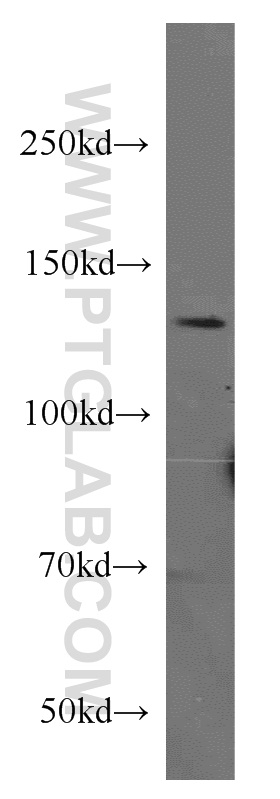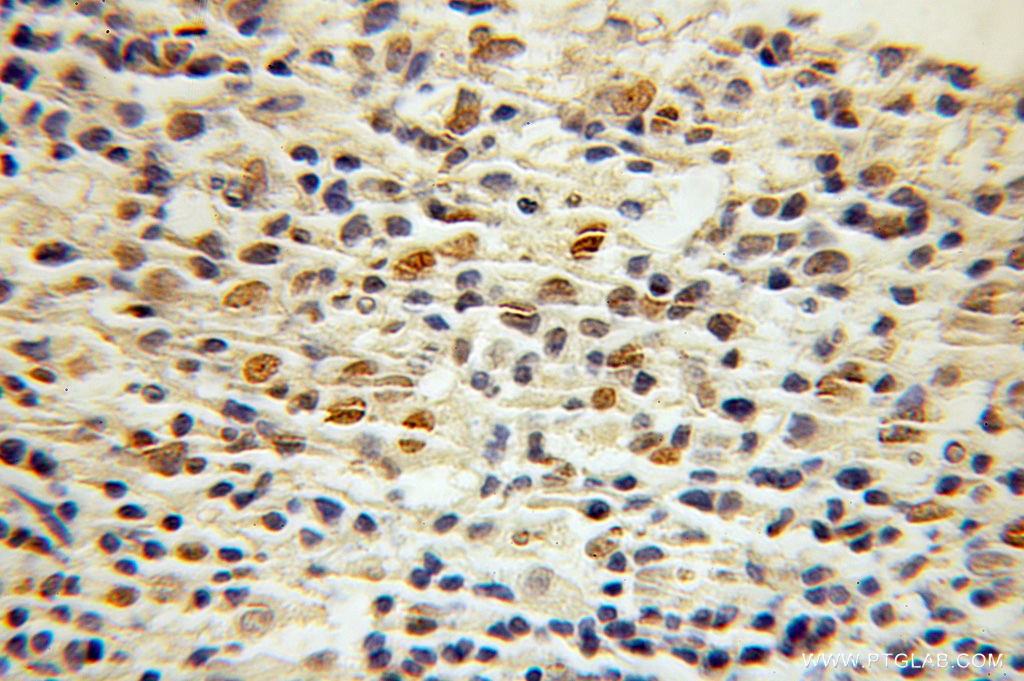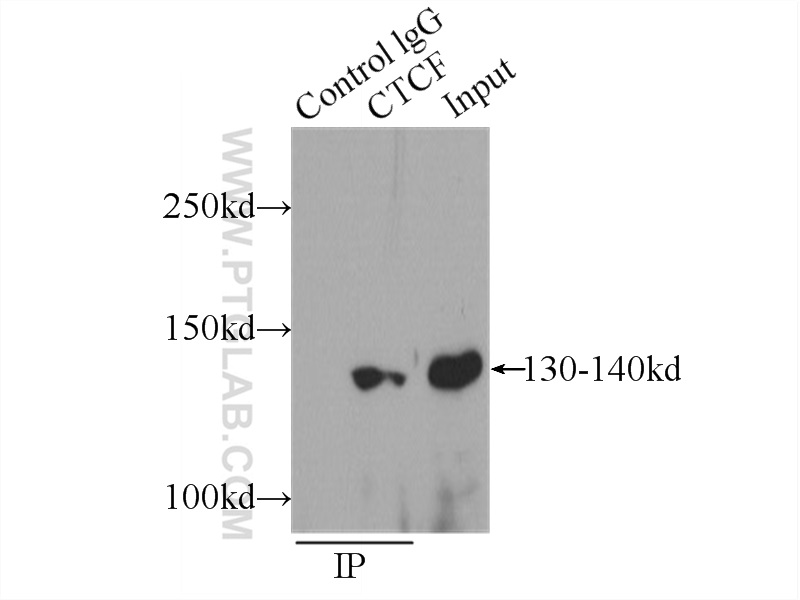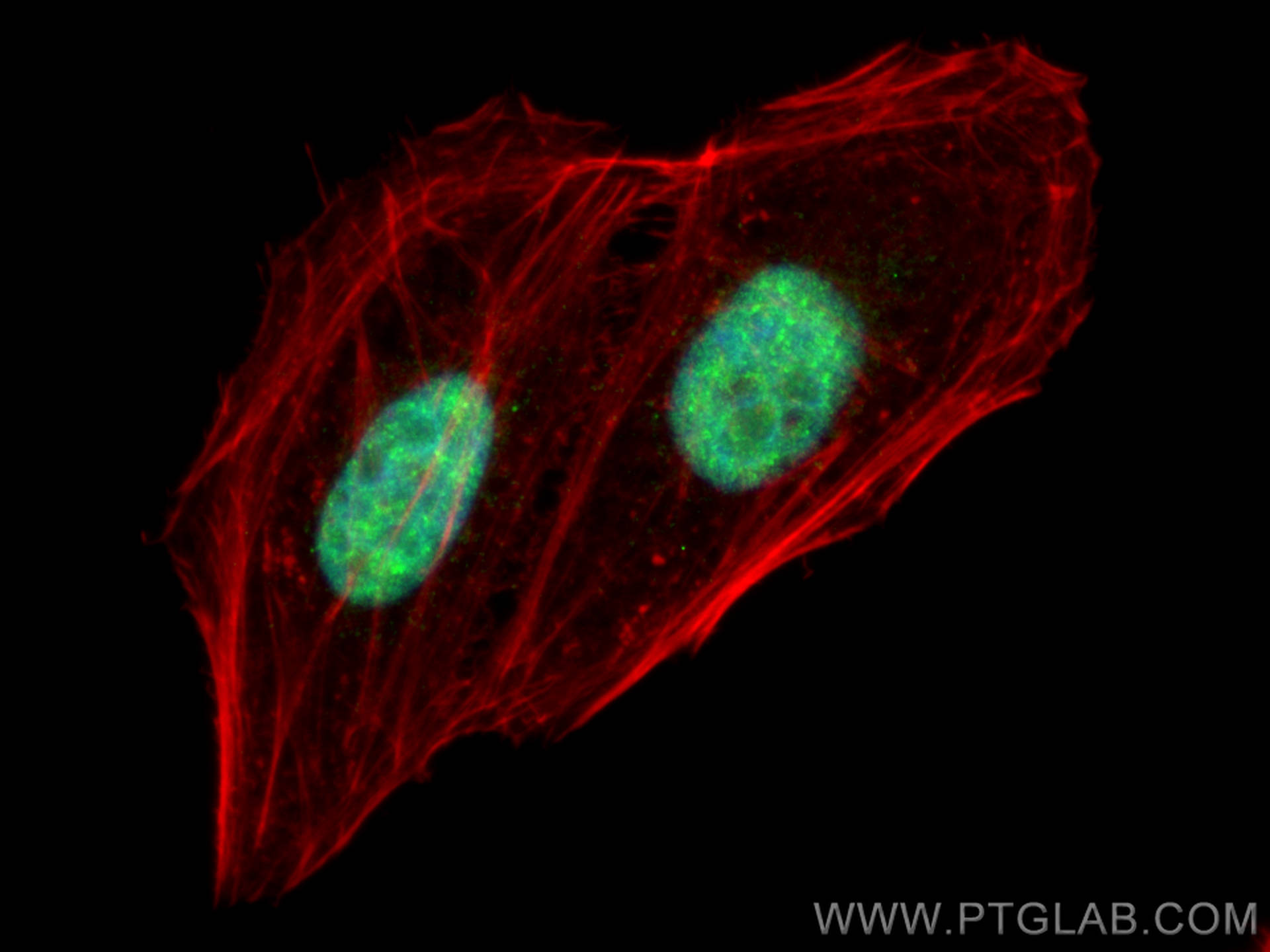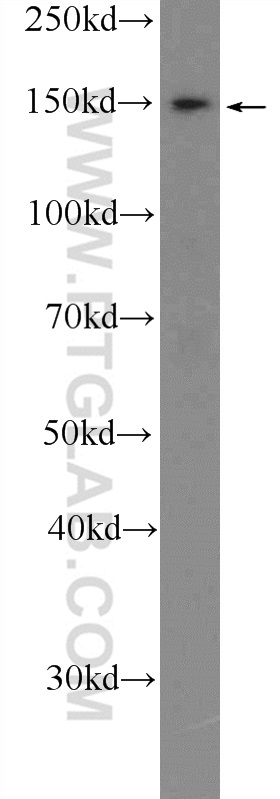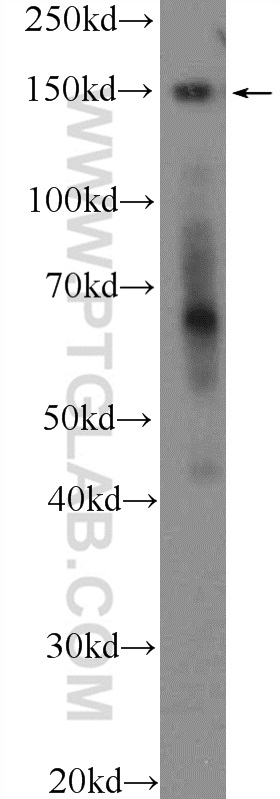验证数据展示
经过测试的应用
| Positive WB detected in | human brain tissue, 4T1 cells, HEK-293T cells |
| Positive IP detected in | MCF-7 cells |
| Positive IHC detected in | human lymphoma tissue Note: suggested antigen retrieval with TE buffer pH 9.0; (*) Alternatively, antigen retrieval may be performed with citrate buffer pH 6.0 |
| Positive IF/ICC detected in | HepG2 cells |
推荐稀释比
| 应用 | 推荐稀释比 |
|---|---|
| Western Blot (WB) | WB : 1:500-1:1000 |
| Immunoprecipitation (IP) | IP : 0.5-4.0 ug for 1.0-3.0 mg of total protein lysate |
| Immunohistochemistry (IHC) | IHC : 1:20-1:200 |
| Immunofluorescence (IF)/ICC | IF/ICC : 1:200-1:800 |
| It is recommended that this reagent should be titrated in each testing system to obtain optimal results. | |
| Sample-dependent, Check data in validation data gallery. | |
产品信息
10915-1-AP targets CTCF in WB, IHC, IF/ICC, IP, ChIP, RIP, ELISA applications and shows reactivity with human, mouse samples.
| 经测试应用 | WB, IHC, IF/ICC, IP, ELISA Application Description |
| 文献引用应用 | WB, ChIP, RIP |
| 经测试反应性 | human, mouse |
| 文献引用反应性 | human |
| 免疫原 | CTCF fusion protein Ag1340 种属同源性预测 |
| 宿主/亚型 | Rabbit / IgG |
| 抗体类别 | Polyclonal |
| 产品类型 | Antibody |
| 全称 | CCCTC-binding factor (zinc finger protein) |
| 别名 | CTCFL paralog, CCCTC-binding factor, CCCTC binding factor, 11-zinc finger protein, 11 zinc finger protein |
| 计算分子量 | 83 kDa |
| 观测分子量 | 55-100 kDa, 130-150 kDa |
| GenBank蛋白编号 | BC014267 |
| 基因名称 | CTCF |
| Gene ID (NCBI) | 10664 |
| RRID | AB_2086799 |
| 偶联类型 | Unconjugated |
| 形式 | Liquid |
| 纯化方式 | Antigen affinity purification |
| UNIPROT ID | P49711 |
| 储存缓冲液 | PBS with 0.02% sodium azide and 50% glycerol , pH 7.3 |
| 储存条件 | Store at -20°C. Stable for one year after shipment. Aliquoting is unnecessary for -20oC storage. |
背景介绍
Transcriptional insulators are DNA elements that set boundaries on the actions of enhancer and silencer elements and thereby organize the eukaryotic genome into regulatory domains. All vertebrate insulators appear to use the versatile CTCF protein. CTCF uses various combinations of its 11 zinc fingers to recognize a variety of unrelated DNA sequences. Once bound to DNA, CTCF can function as a transcriptional insulator, repressor, or activator, depending on the context of the binding site [PMID:12787766,15454938]. In vertebrates, this 11 zinc-finger protein is shown to be crucial in processes of epigenetic imprinting, X chromosome inactivation , and associated with various complex human diseases including cancer and diabetes [PMID:23139640]. The calcualted molecular weight of CTCF is 83 kDa, but stimulation of human corneal epithelial cells with hypoxic stress suppressed a high molecular mass form of CTCF (150 kDa), but not a lower molecular weight form of CTCF (130 kDa)(PMID: 22354964), and there are multiple isoforms of CTCF with molecular masses of 55, 70, 73, 80, 97, and 130 kDa have been observed (PMID: 12878173).
实验方案
| Product Specific Protocols | |
|---|---|
| WB protocol for CTCF antibody 10915-1-AP | Download protocol |
| IHC protocol for CTCF antibody 10915-1-AP | Download protocol |
| IF protocol for CTCF antibody 10915-1-AP | Download protocol |
| IP protocol for CTCF antibody 10915-1-AP | Download protocol |
| Standard Protocols | |
|---|---|
| Click here to view our Standard Protocols |
发表文章
| Species | Application | Title |
|---|---|---|
Sci Total Environ Transcriptome sequencing analysis reveals a potential role of lncRNA NONMMUT058932.2 and NONMMUT029203.2 in abnormal myelin development of male offspring following prenatal PM2.5 exposure | ||
Carcinogenesis Hepatocellular carcinoma risk variant modulates lncRNA HLA-DQB1-AS1 expression via a long-range enhancer-promoter interaction. | ||
mBio A Low-Producing Haplotype of Interleukin-6 Disrupting CTCF Binding Is Protective against Severe COVID-19. | ||
Cancer Cell Int CTCF-activated FUCA1 functions as a tumor suppressor by promoting autophagy flux and serum α-L-fucosidase serves as a potential biomarker for prognosis in ccRCC | ||
Cell Signal USP27 promotes glycolysis and hepatocellular carcinoma progression by stabilizing PFKFB3 through deubiquitination |
